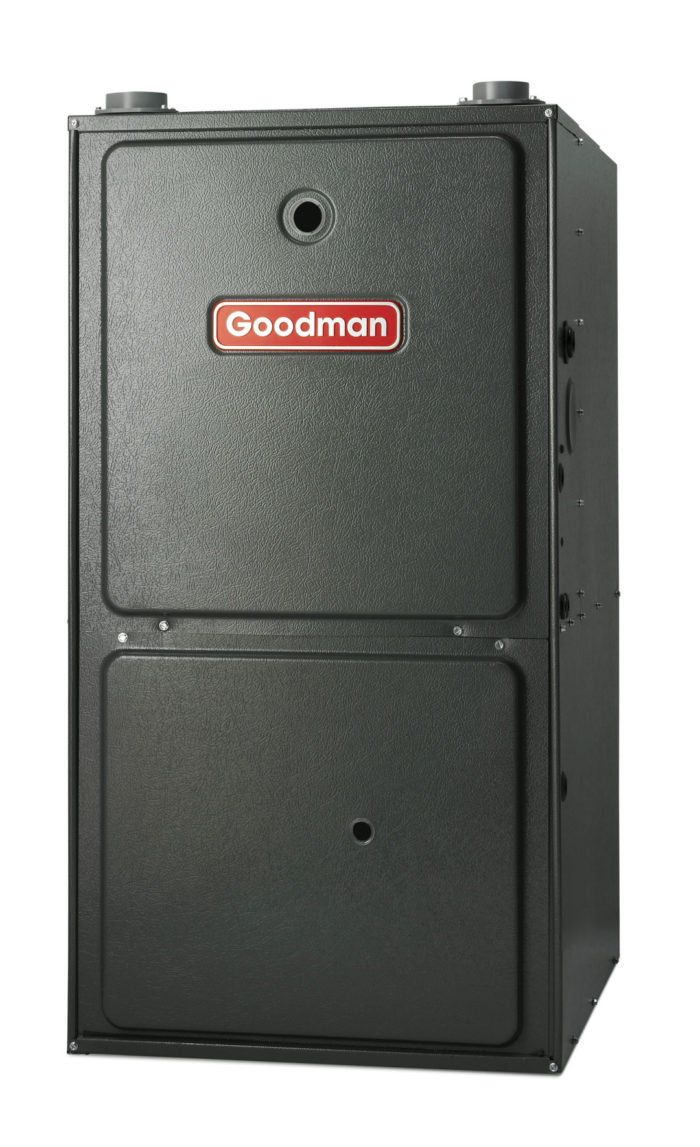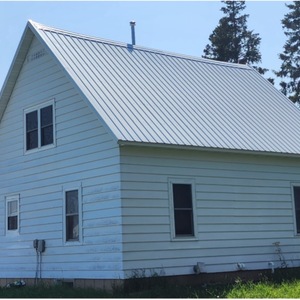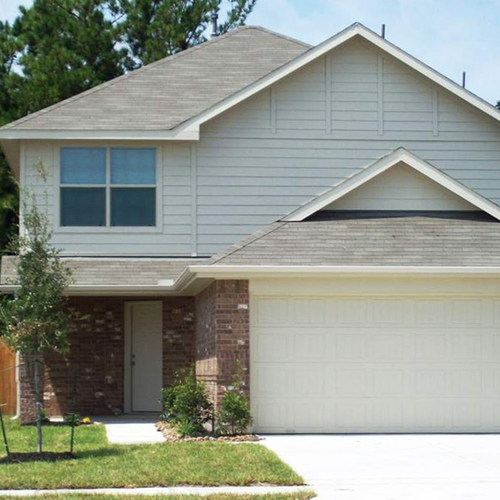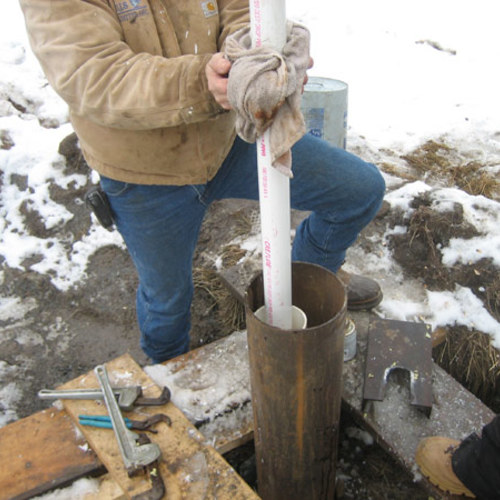
Image Credit: Goodman
Adding more insulation, replacing an inefficient furnace, or performing air-sealing measures are oft-recommended strategies for lowering energy consumption and saving money.
Aaron Vander Meulen puts his finger on a key issue, however, when he wonders whether there is a way of determining exactly how much money improvements such as these will save.
“Anecdotally, my parents upgraded to a 95% furnace last year, and are seeing the savings, but it would have to be compared to the [heating degree days] for each year, correct? And even at that it’s something of a crap shoot since they have a gas water heater as well? One would need to monitor volume of gas at the furnace, correct? is there any sensor for this?”
His question points to the complexity of this seemingly simple question and is the subject of this week’s Q&A Spotlight.
Two points of view
The simple answer to your question, says Michael Blasnik, is no.
“There is no way to figure out the exact savings from a retrofit because we don’t have a perfect parallel version of the world handy where everything else was the same except for the retrofit,” he writes.
Blasnik suggests Meulen can get a “fairly good idea” of savings by analyzing energy and weather data, but he adds, “You can’t control for everything in any given home — differences in occupancy, behavior, non-temperature weather (wind, solar gain), and other changes in the building and equipment can all affect the observed savings… By analyzing the energy use of large groups of homes you can learn a lot more about retrofit impacts, but the findings in any one home will always be suspect.”
John Klingel, however, is voting an “emphatic” yes to Meulen’s question.
“Not down to the gnat’s butt, as you…
Weekly Newsletter
Get building science and energy efficiency advice, plus special offers, in your inbox.

This article is only available to GBA Prime Members
Sign up for a free trial and get instant access to this article as well as GBA’s complete library of premium articles and construction details.
Start Free TrialAlready a member? Log in















11 Comments
Energy Improvements
I agree that calculating energy savings on an energy retrofit/upgrade is difficult - especially when there are so many specialty contractors making exaggerated claims. Homeowners will seldom see substantial savings from a singular improvement. Energy improvement is a package deal - and I rarely see package deals being presented to homeowners. Even if they were, I think the average homeowner, in a non-subsidized community, would balk at the cost. Managing expectations is the best thing we can do for homeowners. I always calculate base loads off of their historical energy bills and try to explain potential savings from that point. For example, replacing that 15 year old hvac equipment could reduce your heating costs X%.
Occupant behavior is the wild card. Recent studies seem to indicate that people who undertake energy efficiency measures in their home do so to have the ability to use more energy. I can only speak for myself, but I made a point to monitor my own behavior very closely from October 2009 to present - without performing any energy improvements. I have been able to reduce my total energy consumption by about 25% without discomfort. This has not translated into a 25% reduction in my energy bills, as energy prices have risen. This is one way we can manage customer expectations by explaining the reality of the situation.
On a related note, I think it would be extremely effective to have an in-home energy/water monitoring device that turned units into dollars - and sent that information to an iPad sized monitor that was stuck to the refrigerator door. I would think that displaying real-time, out-of-pocket expense would go a long way to changing occupant behavior.
question for Grant
Could you share references to those recent studies? I'd love to see their methods and data.
Answer for Michael
Michael,
That came from a recently published report from the Shelton Group - the Energy Pulse. Unfortunately, I cannot provide you with direct information as the reports are priced way above my current budget. I did have the opportunity to see some of their findings and this part really stuck out:
In our Energy Pulse study the second best message to move a consumer to spend $4,000 on energy-efficient home improvements was “I’d be able to set my thermostat to a more comfortable setting without paying more.” We’re hearing it in focus groups, too — that consumers want to buy more energy efficient products so they have license to actually use more energy.
The Shelton Group's website is: http://www.sheltongroupinc.com/
reply to Grant
So it's people saying they'd like to turn up their thermostats -- is that "data"? What fraction of people said this? How big of an average increase in indoor temperatures do you really think occurs?
I think most people are keeping the thermostat where they want to in order to be comfortable. I've got at least as good alternative story -- people in less drafty and better insulated houses are able to turn their thermostats down and feel just as comfortable.
The limited real world data that I've seen -- measured temperatures in people's homes -- has not really supported either theory much. It seems that there is little net change on average with about equal numbers increasing and decreasing temperatures.
Consumers need to understand
Consumers need to understand that this is a very complex question. I write extensively in the commercial and institutional industry about facilities that spend millions on efficiency upgrades, but can never supply me with hard data about how much they are saving. And they have sophisticated BMS systems and engineers on staff.
I wish it wasn't always about the dollars. I wish that sometimes the conversation would be about saving energy for saving energy sake.
Because it's the right thing to do.
"I wish it wasn't always about the dollars. I wish that sometimes the conversation would be about saving energy for saving energy sake."
Amen, Trish.
Macro level
When I remodeled a 1954 ranch a few years ago I added square footage, sealed & insulated, & changed from gas heat to an electric GSHP. After spending hours with a spreadsheet and years worth of electric & gas bills I recognized that like many other enthusiastic green product marketers I'd gotten sucked in to thinking I could compare apples to oranges in an effort to show energy use improvements.
So I stepped back to a more macro level - one which is simple, understandable & meaningful to my clients: Combined gas & electric costs in the month of January (in Minnesota) went from $.29/sf to &.09/sf, for the same number of occupants ....and Minnesota Januarys are pretty much the same year-to-year.
In my opinion this is a realistic & truthful measure
energy data
This is primarily a reply to Trish Holder: The situation you describe of not having detailed energy use data is pretty much the norm. My experience isn't vast, but what I have seen is that energy modeling is usually not done except when a project is pursuing some sort of certification, e.g..: LEED. Ergo, there's no baseline energy simulation. There are plenty of baselines out there one can compare one's building to, but it's not the same as a simulation of your exact facility.
Similarly, even when you look at new construction with a nice new physical plant and BAS, the sensors and systems required for detailed measurement of energy use typically aren't standard equipment. These components are pricey, and most building owners find them cost prohibitive.
I've found a good resource in the DOE/EERE's High Performance Buildings Database. It provides many case studies, a lot of which include information on simulated vs. actual energy use. For more detailed reading, I would also recommend searching EERE for Zero Energy Building case studies. There are very few of these buildings, but by definition they have comprehensive measurement and verification systems for energy use. The studies are able to describe precisely what works and doesn't and exactly what it means in terms of energy.
Home Energy Saver
The Home Energy Saver program linked to above is nice, and I am glad it is available, but it is extremely limited for anyone considering building a well insulated house in a cold climate. The only R value for under a slab is 5. Hmmm. I hope the DOE upgrades the program. I appreciate it being there, but don't understand the R value constraints in its present form. Dang.
Therms and kWh's
The best way to predict energy savings for a proposed energy retrofit is to review energy bills for a given residence. If you are fortunate enough to have metered natural gas, figuring out the heating portion of the yearly bill is easy. The baseline months of June, July and August will tell you your gas usage for hot water, clothes drying and cooking. Add the total therms used for these 3 months and divide by 3 to get your base monthly gas use. This base monthly usage X 12 months gives you the non heating portion of your gas bill, the rest is the heating load.
With this information you can plug in yearly heating degree days (hdd) to get an idea of the current building efficiency. I like to use hdd per therm. This will remain constant regardless of the severity of the winter because of the correlation between energy used and the heating degree days for the period. The lowest hdd per therm will be in December and as the daylight increases so will your solar gain and hdd per therm. Furnace efficiency comes into play and if the efficiency is known you can multiply the annual heating energy usage by it to determine the actual annual heat loss for the building. Heating seasons vary so to compare year over year you will need to normalize the energy used as a percentage of the normal hdd.
The next step is to determine the heat loss for a building expressed in Btu's per degree F. To do this you need to break the building down into elements with square footages for each. The elements would be walls, ceilings, windows, foundation and the like. Determine the U value for each X the area X 24 hours X normal hdd for the heat loss for each element in Btu's. The total of all of these will be your annual heat loss in Btu's plus infiltration heat loss. The difference between the elemental heat loss and the actual energy used will be the infiltration heat loss, we will leave solar gain out of the equation for now.
If you are considering an energy improvement to your house I would recommend a blower door test and thermal imaging to see the current picture of the building. Air infiltration can be a large part of the annual energy used and has everything to do with comfort. To improve the efficiency of any building you will need to reduce air leakage and improve the thermal envelope. With the home broken down into elements and an annual energy usage assigned to each you can run some improvement scenarios to see where the best return on investment will be.
Unfortunate Tendencies
While I certainly appreciate the desire to measure the success of an improvement in terms of ROI, most of our customer's efforts are aimed at being better stewards of their resources and the correction of comfort issues.
A door that is left cracked open for a few hours can wreck an entire week's worth of improvement.
Find me a home with children and I will show you an uncontrollable set of variables.
Log in or become a member to post a comment.
Sign up Log in